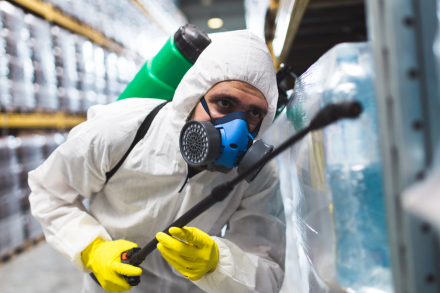
The field of industrial hygiene is relegated to the anticipation, recognition, evaluation, and control of occupational health hazards that arise in the workplace. Find out how The Lawson Group works with companies to optimize their industrial hygiene.
Transcription:
The field of industrial hygiene is relegated to the anticipation, recognition, evaluation, and control of occupational health hazards that arise in the workplace. And I guess what that really means is that you have to, first of all, anticipate that you will find something that represents a health hazard.
So if you’re walking into a plant where they’re doing spray painting, you might be aware of the fact before you even go in that there might be industrial hygiene hazards from the chemicals that are used for the spray painting or the spray finishing.
The fact that you can go in and recognize which of the chemicals that they’re using are potentially harmful and therefore need to be looked at takes you to the next step, which is evaluation. And you can do that by a number of means.
You can look at safety data sheets or if you’re familiar enough with paint spray operations, you can determine exactly what the chemicals are that they’re using and then evaluate them by doing some type of testing, and the testing will determine what the levels of exposure are. And then once you arrive at data from that testing, you can compare it to relevant occupational health standards. And then based on that, you can implement controls.
So those are the four steps of the entire process.
It’s not always easy to do, it’s not always recognizable. And the obvious result of doing the exposure monitoring is to hopefully prove to people that if they are exposed to levels of hazardous materials in the workplace, they are at safe levels of exposure. And if they are exposed to unsafe levels than what are the controls that you can implement to actually make them safer when they come to work every day?
When you also take a look at all these chemical exposures, you talk about acute effects and chronic effects, acute effects of those that happen immediately.
Most people are familiar with what chlorine or ammonia smell like, and if you have significant irritation or respiratory distress, those are reactions that happen right now.
Chronic effects are things that happen over a longer period of time. If someone is exposed to asbestos, they won’t notice any adverse effects today or tomorrow. But if they’re exposed to asbestos over working s lifetime, it could end up with asbestosis or mesothelioma.
So a lot of the monitoring that’s done to determine what exposures look like are geared towards determining both acute exposures as well as chronic or long term exposures.
And then you can take a look at any one of those three different exposure limits either OSHA, MacGill or NAOC to compare what you’ve measured for exposures to people and what those exposure limits call for to determine if there’s a potential adverse health effects.
OSHA refers their chemical exposure limits as permissible exposure limits or PELs. Those limits were established back in the 1969 1970 timeframe when OSHA came into being, and those levels of exposure were adopted from another group, which is the American Conference of Governmental Industrial Hygienists, or ACGIH. And they publish a list every year of what they call their threshold limit values or TLVs.
And these are limits of exposure that you can be exposed to safely for an eight hour workday, theoretically for five day work, week for working lifetime with two weeks of vacation every year.





